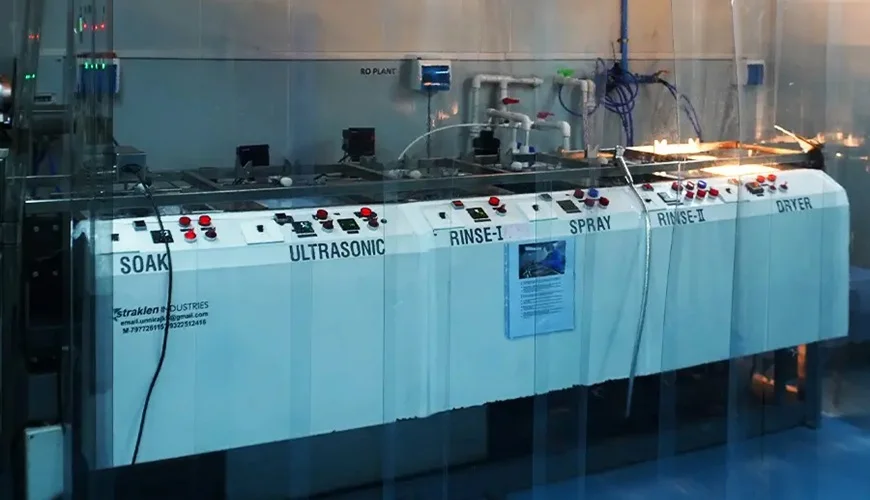In semiconductor fabrication, microscopic impurities can mean the difference between success and failure. Cleanliness isn’t just a hygiene concept-it is the very foundation of operational excellence. This is why implementing Class 100 cleanroom standards, paired with UHP surface machining, sets the gold standard for ultra-pure manufacturing.
What Defines a Class 100 Cleanroom?
Under the legacy Federal Standard 209E (now largely superseded by ISO 14644-1), a Class 100 cleanroom permits a maximum of 100 particles of 0.5 µm or larger per cubic foot of air. That equates to roughly ISO Class 5, making it one of the most stringent environments widely used in semiconductor and nanotechnology industries
These cleanrooms enforce positive air pressure, HEPA filtration, and laminar airflow-often through raised or perforated flooring-to relentlessly purge contaminants. Semiconductors require such controlled settings because even a speck of dust can derail chip functionality.
Elevating Surface Perfection with UHP Surface Machining
Air purity alone isn’t enough-surface integrity is equally critical. Ultra-high-pressure treatments, frequently using water-based or specialty coolants, are used in UHP surface machining to clean and improve component surfaces. While sourced from water blasting techniques, the UHP approach here is adapted to machining to eliminate residual debris and micro-contaminants, paving the way for defect-free semiconductor surfaces.
Although much literature on UHP concerns water blasting for heavy cleaning the same principle-removing contamination at microscopic levels-can be integrated into ultra-precision machining for semiconductor applications.
Why These Standards Are Non-Negotiable for Semiconductors
- Eliminate Yield Loss
Electrical issues or short circuits can be caused by debris as small as nanoscale. A Class 100 cleanroom ensures a pristine air environment, while UHP machining secures a spotless surface-together preserving yield.
- Enhance Reliability
Products born of ultra-clean conditions maintain consistent performance, with reduced risk of latent defects or failure
- Boost Operational Efficiency
Cleaner machining equals fewer rejects, reduced scrap, and optimized efficiency – ultimately delivering profitability and sustainability.
Best Practices for Manufacturing UHP Components
- Cleanroom Design & Airflow
Design facilities with HEPA filtration, positive pressure, and laminar airflow principles to maintain consistent air quality-critical for ISO 5/Class 100 compliance
- Integrate UHP Machining Cleanly
Whether water-jet based or advanced coolant systems, UHP machining must complement cleanroom protocols-segregating coolant handling and ensuring minimal airborne residue.
- Validation & Monitoring
Use particle counters and conduct regular audits to verify compliance. Ensure both air and surface cleanliness remain consistently within Class 100 parameters.
- Training & Discipline
Staff must adopt rigorous gowning, material handling, and UHP machining protocols-to protect both the cleanroom and component surfaces from contamination.
Final Thoughts
In the high-stakes realm of semiconductor manufacturing, cleanliness is not a luxury-it’s the pillar of precision. Only Class 100 cleanroom conditions, fused with UHP surface machining, deliver the ultra-pure environments your components demand. At Mentco, we bring together meticulous cleanroom standards and advanced UHP machining techniques to manufacture semiconductors that stand up to the most exacting standards. Ready to elevate your manufacturing to unmatched purity and performance? Connect with Mentco today and let precision be your competitive edge.
Frequently Asked Questions (FAQs)
What is a Class 100 cleanroom, and why is it critical for semiconductors?
A Class 100 cleanroom allows no more than 100 particles (≥ 0.5 µm) per cubic foot-creating an ultra-clean air environment essential to prevent defects in semiconductor chips
What does UHP surface machining mean in this context?
Inspired by advanced techniques such as water blasting, UHP surface machining uses high-pressure machines to polish and clean surfaces, eliminating microscopic impurities that conventional machining may overlook.
Can Class 100 standards alone ensure ultra-pure parts?
Not entirely. Clean air is vital, but surface cleanliness is equally crucial. Combining Class 100 environments with UHP surface machining safeguards both airborne and surface integrity.
How does UHP componets improve semiconductor?
By eliminating surface contaminants and machining residues, UHP components hace reduced defects, increased yield, and supports reliability in final semiconductor parts.



